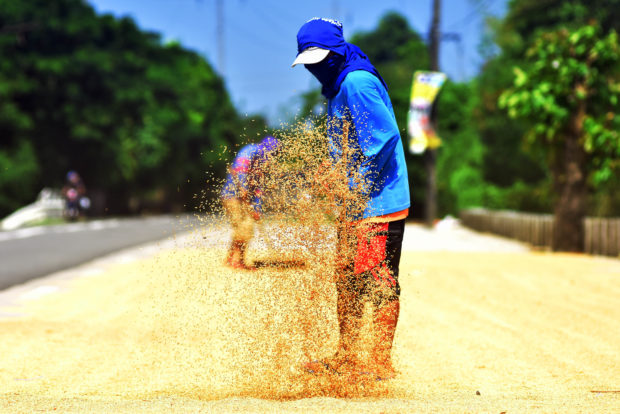PH palay output in 2023 tipped to hit record high
MANILA —Local palay output is expected to have hit a record high 20 million metric tons last year, mainly due to better planting conditions despite the onset of the El Niño weather phenomenon.
Citing data from the Philippine Rice Information System, Department of Agriculture (DA) spokesperson Arnel de Mesa said domestic production already stood at 18.8 million MT as of October last year, when the last quarter harvest was just beginning.
Given this, De Mesa expects the total palay output for 2023 to “easily breach” 20 million metric tons, eclipsing the record 19.96 million MT reported by the Philippine Statistics Authority (PSA) in 2021.
He attributed the higher output to the improved farm conditions last year, particularly in the first six months when not too many typhoons hit the country.
New targets
The country’s palay output steadily grew from 2019 to the record 19.96 MT in 2021 before declining to 19.76 million MT the following year.
Article continues after this advertisementThe DA is yet to finalize its targets for 2024 but expects palay output to remain at the 20 million MT level given the possible constraints on production due to the El Niño weather phenomenon, which is characterized by below normal rainfall.
Article continues after this advertisementREAD: Unmilled rice output forecast to hit record high this year
De Mesa also projected that the country’s total agricultural output in 2023 posted “positive growth,” but below the targeted 3 to 4 percent range as the production of some key sectors lagged.
In the third quarter of 2023, for example, the output of corn and sugar declined but rice production expanded. The DA also saw gains in the livestock and poultry subsectors.
Lower harvests
In 2022, the country’s farm output dipped by a slight 0.1 percent, smaller than the decline of 1.7 percent and 1.2 percent in 2021 and 2020, respectively, according to the PSA.
READ: PH agriculture output shrinks for second quarter in a row
Agricultural production had declined for three consecutive years following a modest increase in 2019 mainly due to lower crops and fishery harvests.
Separate data from the PSA showed agriculture output slipped by 0.3 percent in the third quarter of 2023, shrinking for the second quarter in a row, mainly due to typhoons and higher farm costs. INQ
